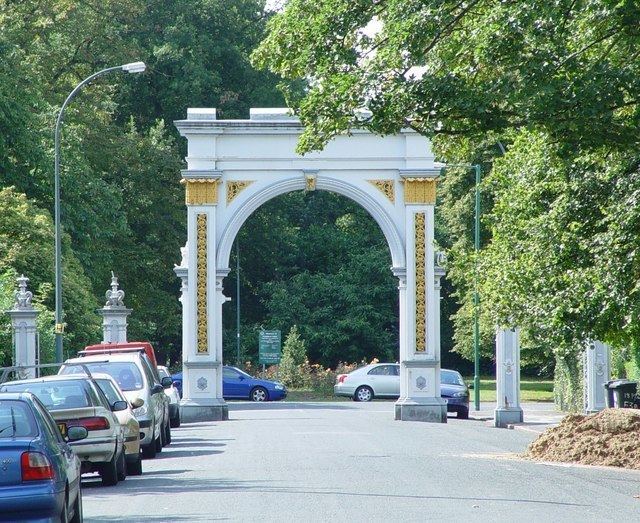Type Municipal Created 1860 Status Open all year Phone +44 1482 300300 | Area 8 ha | |
 | ||
Hours Open today · 7:30AM–4PMSaturday7:30AM–4PMSunday7:30AM–4PMMonday7:30AM–4PMTuesday7:30AM–4PMWednesday7:30AM–4PMThursday7:30AM–4PMFriday7:30AM–4PMSuggest an edit Similar East Park - Kingston upon Hull, Pickering Park - Kingston, Wilberforce House, Streetlife Museum of Transport, Princes Quay | ||
Pearson park anaheim california kkk rally last one
Pearson Park, originally known as the People's Park is a park in the west of Kingston upon Hull, England. It is situated about 1 mile (1.5 km) north-west of the city centre of Hull with its main entrance on Beverley Road and its western boundary adjoining Princes Avenue.
Contents
- Pearson park anaheim california kkk rally last one
- The fab four the ultimate tribute 1st pearson park show 2000
- History
- References
The park was established in 1862 through the gift of land by Zachariah Pearson, and was the first public park in the city.
The fab four the ultimate tribute 1st pearson park show 2000
History
During the Victorian period the lack of or need for public spaces for working classes to exercise, or otherwise enjoy themselves became a public cause; in 1833 a parliamentary select committee on Public Walks published a paper which promoted the need for open green spaces in cities. An early proposal in Hull was for a 4.5 mi (7.2 km) walk around the town from Humber bank to Humber bank; this re-appeared as the Grand Victoria Promenade Company in 1845, which proposed a wide road and tree lined walk; the scheme did not go ahead, and the Victoria Dock Branch Line (c. 1853) was built along a similar route. In the late 1850s an attempt was made to gain the rights to the use of the land of the former Hull Citadel for use as a public space, leading to an unsuccessful suit in the Court of Chancery in 1861 made by the Corporation of Hull against the Government.
In 1860 the then Mayor, Zachariah Pearson, donated a 27-acre (11 ha) plot to the board of health on the proviso it would be developed as a park. He retained 10 acres (4.0 ha) on three sides of the park, and constructed a road to the land. At this time the land lay outside the urban growth of the town, close to the hamlet of Stepney.
On 28 August 1860 the park was inaugurated. The event was organised by Enderby Jackson; a procession starting at Mansion House to the park took place, the whole train over 2 miles long. According to Sheahan (1864) around 30,000 visitors came to Hull by railway to observe the proceedings. A ceremony involving the deed of conveyance took place, and the Mayor, Zachariah Pearson then planted a tree, a Wellingtonia Gigantea. Celebrations were continued at the Station Hotel, with a dinner and fireworks display, and to the next day, with further ceremonial tree planting.
At the opening ceremony Pearson noted the intention of providing open spaces for the good health of the working population, also noting that the aim of constructing high status houses around the park was to keep the wealthy citiens of Hull living within Hull.
The original park design was by J. C. Niven; in 1864 the park included a cricket ground, a folly The Ruins, statues of Queen Victoria and of Ceres, the goddess, as well as a lake. Other areas were set aside for a bowling green, archery, and gymnastics. In addition a road had been built around the park, along which high quality 'villa' residences were under construction. The main entrance, from Beverley Road, 50 by 29 1⁄2 ft (15.2 by 9.0 m) wide by high, was an ornamental gateway by Young and Pool, iron gates by Thompson and Stather of Hull formed the Princess Avenue entrance. The east entrance lodge, c. 1870 (1861?) is now listed.
Other early features surviving included a cast iron drinking fountain (1861),, and statues of Queen Victoria (installed 1861) and Prince Albert (installed 1868), both by Thomas Earle.
Housing development on the surrounding road took place throughout the latter part of the 19th century; by 1890 much the road had been developed, all substantial houses; F.W. Hagen was architect for many of them, numbers 43, 50 and 54, all from the early 1860s are listed buildings.
A memorial to Pearson was added in 1897, as a marble relief, fixed to a ironstone monolith.
A bandstand was installed in 1908. In 1912 a cupola rescued from Cuthbert Brodrick's Hull town hall was installed in the park. In around 1930 a Victorian style conservatory was built near the lake.
During the Second World War the park housed nissen huts and air raid shelters, which were removed in 1954; part of the park's serpentine path system was lost during these modifications. An iron bridge across the lake, and the bandstand were also removed after the Second World War.
Late 20th century modifications include installation of fountains in the lake, construction of a children's playground on the west edge of the park (replacing tennis courts, and originally a bowling green). The 150th anniversary of the park opening was celebrated on 29 August 2010, as part of the celebrations another Wellingtonia gigantea tree was planted.
